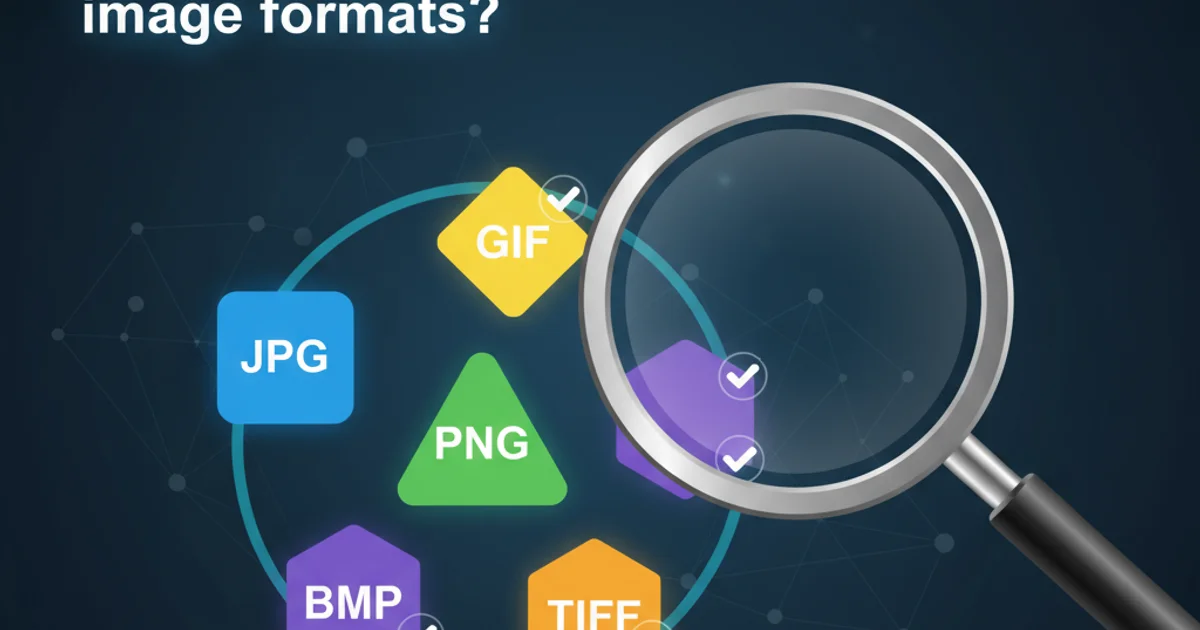Setting the filter to an OpenFileDialog to allow the typical image formats?
Categories:
Setting OpenFileDialog Filters for Common Image Formats in C# WinForms

Learn how to configure the OpenFileDialog control in C# WinForms to filter for typical image file extensions, enhancing user experience and ensuring correct file selection.
The OpenFileDialog control is a fundamental component in many Windows Forms applications, allowing users to select one or more files. When dealing with image processing or display, it's crucial to guide the user by presenting only relevant file types. This article will walk you through setting up the Filter property of the OpenFileDialog to specifically target common image formats such as JPEG, PNG, GIF, BMP, and TIFF, making your application more user-friendly and robust.
Understanding the OpenFileDialog Filter Property
The Filter property of the OpenFileDialog is a string that determines the choices that appear in the "Files of type" drop-down list in the dialog box. This string uses a specific format: a description of the filter, followed by a vertical bar (|), and then the filter pattern. Multiple filter options can be concatenated using the vertical bar as a separator. Each filter pattern can include multiple file extensions separated by semicolons (;).
flowchart TD
A[Start] --> B{User Clicks 'Open' Button}
B --> C[OpenFileDialog Instance Created]
C --> D["Set Filter Property (e.g., 'Image Files|*.jpg;*.png')"]
D --> E[Show Dialog]
E --> F{User Selects File}
F --> G[Dialog Returns Selected File Path]
G --> H[End]Workflow for using OpenFileDialog with a filter.
Constructing the Image File Filter String
To allow typical image formats, you'll need to combine descriptions and file extensions for each format, and then an "All Image Files" option, and finally an "All Files" fallback. A well-constructed filter string improves usability significantly. Here's how to build it step-by-step for common image types.
using System.Windows.Forms;
public partial class MainForm : Form
{
public MainForm()
{
InitializeComponent();
}
private void btnOpenImage_Click(object sender, EventArgs e)
{
OpenFileDialog openFileDialog = new OpenFileDialog();
// Construct the filter string for common image formats
openFileDialog.Filter = "JPEG Files (*.jpeg)|*.jpeg|" +
"JPG Files (*.jpg)|*.jpg|" +
"PNG Files (*.png)|*.png|" +
"GIF Files (*.gif)|*.gif|" +
"BMP Files (*.bmp)|*.bmp|" +
"TIFF Files (*.tiff)|*.tiff|" +
"All Image Files|*.jpeg;*.jpg;*.png;*.gif;*.bmp;*.tiff|" +
"All Files (*.*)|*.*";
openFileDialog.Title = "Select an Image File";
if (openFileDialog.ShowDialog() == DialogResult.OK)
{
string selectedFilePath = openFileDialog.FileName;
MessageBox.Show($"Selected file: {selectedFilePath}");
// Further processing of the selected image file
}
}
}
C# code demonstrating how to set the Filter property for common image formats.
Explanation of the Filter String Components
Let's break down the filter string used in the example:
"JPEG Files (*.jpeg)|*.jpeg": This defines a filter option for JPEG files.JPEG Files (*.jpeg)is the descriptive text shown to the user, and*.jpegis the actual filter pattern."JPG Files (*.jpg)|*.jpg": Similar to JPEG, but for the.jpgextension."PNG Files (*.png)|*.png": For Portable Network Graphics files."GIF Files (*.gif)|*.gif": For Graphics Interchange Format files."BMP Files (*.bmp)|*.bmp": For Bitmap image files."TIFF Files (*.tiff)|*.tiff": For Tagged Image File Format files."All Image Files|*.jpeg;*.jpg;*.png;*.gif;*.bmp;*.tiff": This is a crucial entry. The description isAll Image Files, and the filter pattern*.jpeg;*.jpg;*.png;*.gif;*.bmp;*.tiffallows all the specified image types to be visible simultaneously."All Files (*.*)|*.*": This is a general fallback that shows all files, regardless of their extension.
OpenFileDialog's "Files of type" dropdown. The first filter in the string will be the default selected option when the dialog opens.1. Add an OpenFileDialog to your Form
Drag and drop an OpenFileDialog component from the Toolbox onto your WinForms designer. It will appear in the component tray at the bottom of the designer.
2. Create an Event Handler
Add a button to your form and double-click it to create a Click event handler. This is where you'll place the code to open the dialog.
3. Implement the Filter Logic
Inside the button's Click event handler, instantiate OpenFileDialog, set its Filter property using the string provided in the example, and then call ShowDialog().
4. Handle the Selected File
Check if ShowDialog() returns DialogResult.OK. If it does, the user has selected a file, and its path can be accessed via openFileDialog.FileName for further processing.